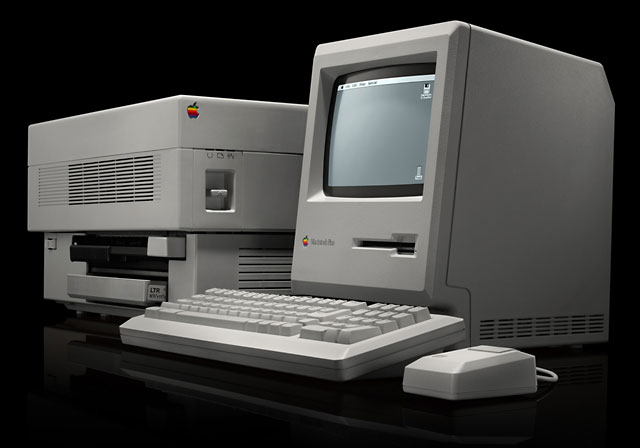In my previous article, I discussed the care and maintenance of the venerable Mac Plus.
Well, I displayed my imperfections as a Triassic Mac user. I know a number of things about old Macs. However, I am a writer, not an engineer (with apologies to the late DeForest “Bones” Kelley).
It is fortunate that the Mac community still retains a handful of people who still know a bit more than I do about Triassic Macs. It is also good that there are writers who will take the time to pass along the knowledge to others.
Stanford University’s Dr. Thomas H. Lee was kind enough to send a compliment about the Triassic Mac series. He did note the following:
“ I hope you won’t mind my offering a few minor corrections.
I hope you won’t mind my offering a few minor corrections.
“The article talks about a video card, but the closed design of the Plus doesn’t allow for any removable cards. Instead, it has an analog board (which contains the low and high voltage power supplies and most of the video/audio circuitry) and a logic board (motherboard), neither of which Steve Jobs intended to be touched by a consumer’s hands.
“The analog board is famous for several problems, but these aren’t really related to the weight of the transformer. The erratic picture problem you mention is most frequently caused by degraded solder joints in the deflection yoke connector (the high-voltage – flyback – transformer’s connections seem to be hold up pretty well over time). It seems that the wave soldering machine used in manufacture couldn’t cope with the greater thermal mass of the thick pins in those connectors, so the solder joints there ended up being marginal in many Pluses. Over time, thermal cycling (worsened by the lack of a fan) causes tiny cracks to develop in the solder where the connector pins meet the analog board, and an erratic picture (or no picture at all) results. That’s why slapping can help. Resoldering correctly (with fresh solder) fixes the problem right away, and more or less permanently (if you do this, leave the yoke connector plugged in to prevent the soldering heat from deforming the connector plastic).
“As for the electrolytic capacitors, they degrade not so much because of age, but because of stress (again, the lack of a fan doesn’t help). The designer underspecified several of them (particularly the nonpolar DC-blocking cap in the horizontal deflection circuit), so they overheat and die prematurely. I have some nerdy tech notes (PDF) on the Plus analog circuits (generously posted by Gamba at his site, http://home.earthlink.net/~gamba2), which describe these and other pathologies in greater (probably too much) detail.
“Thanks, Manuel, for helping folks keep these terrific old machines up and running.
“I look forward to reading your future articles.”
Thank you, Doctor. To err is human, to correct divine.
Short link: http://goo.gl/zVxCL8

